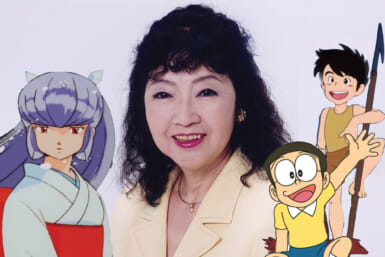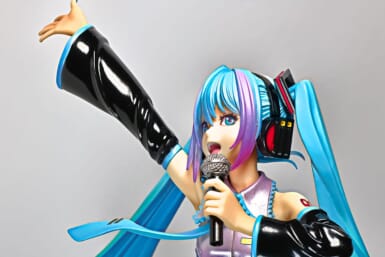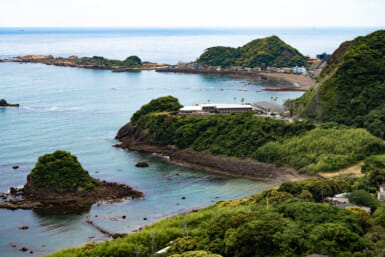by Elyse M. Rogers
LEARNING SHIATSU
Foreigners who live in Japan often have an interest in oriental culture and medicine. Some are interested only in experiencing the relaxation or relief of pain supplied by acupuncture or shiatsu, but others are interested in “getting more involved.” Which leads, naturally, I suppose, to the many requests I’ve had over the years for information about classes or schools that teach shiatsu or pressure massage.
Many of these schools, as you might imagine, are professional schools that have been set up to train and license Japanese professionals. Few are aimed at the person who is interested merely in learning for self-improvement or to help a spouse or family member, and rarely are schools of any type oriented to English-speaking students.
So it was with great pleasure that I recently learned about a shiatsu class organized for foreigners and taught by a real professional — Hirotoshi Kimura.
SHIP
Before I get into the interesting shiatsu program that Kimura-sensei is conducting, let me tell you about the SHIP program that I think is a wonderful new program for foreigners here in Tokyo. The acronym SHIP stands for Showa International Port, and is a program of continuing classes and courses, taught in English, offered by Showa Women’s University in Setagaya-ku, Tokyo.
I talked with David Stubbs, communications officer in the administrative office, who has been a major force behind this program, and he explained what they are trying to do, and the wide range of courses they are offering. Showa is a university which has been offering unique course to Japanese women since 1920.
The school has always had a “Global Vision” in pushing study-abroad programs and just last year opened a campus in Boston to further this international program. The international cultural center of the university—SHIP—is intended to be a meeting and growth center for people of all nationalities. (Address and more information at end of column.)
ALL ABOUT SHIATSU
Now, to get back to the shiatsu class: Shiatsu, as many of you know, is a form of manipulation or massage administered by the thumbs, fingers and palms, applying pressure to the skin to correct internal malfunctioning, promote and maintain health and treat specific illnesses.
According to those involved in oriental medicine, shiatsu is a health care method which can be used in daily life to prevent as well as treat diseases. It emphasizes correction and maintenance of bone structure, joints, tendons, muscles and meridian lines whose misalignment distorts the body’s energy patterns and the autonomic nervous system, thus causing disease.
The goal of shiatsu is to restore the body’s normal functioning rather than treat one bodily symptom, but by this means symptoms of discomfort or illness should be relieved.
In the SHIP classes, Kimura-sensei demonstrates the proper shiatsu techniques and then has the students practice on one another under his watchful eye. So, the floor is covered with work-out mats and the students arc requested to wear comfortable clothing.
He also gives each a handbook that explains the purpose behind shiatsu and further explains the basic techniques. This is an English-language handbook that he himself has made up by translating and rewriting (for lay people) sections of Masunaga-sensei’s book on shiatsu.
In addition to the practice on one another, Kimura-sensei leads the students in flexibility exercises which he tells me are important for both practitioners and patient. He protested when I said it appears that anyone practicing shiatsu needs strength and flexibility, but it sure seemed that way to me. There’s no question that Kimura-sensei makes it look easy, though, as he’s in excellent physical shape and has unbelievable flexibility (he can do the splits).
He does demonstrate and explain, however, that by using the weight of the body properly, shiatsu technique is not as difficult and strenuous as it might be otherwise. Simple pushing or grabbing motions are not only incorrect, they take lots of energy. I was impressed by how his students (even only into the third lesson) had already acquired that gentle but firm slow, constant pressure. (One tried her skill on me, so T can speak from actual experience.)
BACKGROUND & PHILOSOPHY OF HIROTOSHI KIMURA
Talking with Kimura-sensei is embarking on a path of personal enlightenment. For this shiatsu practitioner is not simply a provider of finger pressure or body massage, but rather a man who has studied the meaning of the universe and whose whole philosophy is to help others. He hopes that in the process of learning shiatsu we can experience bodily purification and move from the material to the spiritual.
You might think that someone who is such a serious philosopher would be difficult to understand and hard to relate to. But that certainly is not so. The cheerful, good-English-speaking (although he protests he can’t communicate half as well as he’d like), and very personable Kimura-sensei has a sense of humor and makes his shiatsu sessions a lot of fun.
He was graduated from Nippon Shiatsu Senmon Gakko, a two-year professional course that leads to the governmental examination and licensing. At the school he was taught the Namikoshi style, since the school was founded by the famous shiatsu teacher Namikoshi. After graduation and licensing, however, he followed one of his other teachers, Masunaga-sensei, who started his own school and became a great shiatsu master.
Kimura-sensei worked with Masunaga-sensei for six years and still teaches at the school. Currently he also teaches private classes and takes private sh’atsu patients.
Lest you think this man came to shiatsu straight from the cradle, let me correct that impression. For ten years he was one of those hard-working salarymen we see rushing down Tokyo streets or view on TV dramas—actually working for the company that makes Old Spice men’s shaving products. But “I never liked organization life,” he says, and he felt he could be of more help to others with his hands than by working in an office.
Interestingly though, when he told his boss at Old Spice he wanted to quit and go to shiatsu school, his boss suggested he was “being foolish” and talked him into slaying with the company and going to shiatsu school part time. Kimura-sensei followed that path for a year, then finally did quit the company and completed his shiatsu studies full time.
He has not regretted his decision to “help others with his hands” although he is sad that oriental medicine still has “less prestige” than Western medicine. Surprisingly, or perhaps not so surprisingly if you think about Kimura-sensei’s philosophy, he much prefers meeting and serving the “average” person rather than anyone famous or in “high society” as he calls it.
Despite that statement, he’s helped many “famous” folks, particularly in the entertainment industry. One was Liza Minnelli his services while in Tokyo and was so grateful she sent Kimura-sensei complimentary tickets to one of her performances.
SHIATSU BY KIMURA
If you’re more interested in receiving shiatsu than in learning the practice, Kimura-sensei takes private patients in his home office. (Two of the students in his present SHIP class are patients or clients as well.) He charges ¥7,000 per hours (or sometimes the session runs an hour and 15 minutes), and works by appointment. His hours arc flexible, but it’s best to call for appointments between 7-8 a.m. or after 10 p.m. since he is often teaching classes.
More than 80 percent of his patients are foreigners, and he tells me they represent more than 40 nationalities. His office is one stop from Shinjuku on the Keio line, but ask for directions when you call to make an appointment. Phone 485-4515.
CLASS LOCATION & FEES
All SHIP classes are concluded at Showa Women’s University in Taishido, Setagaya-ku. It’s a bit difficult to find the first time, but the school will send you a nice map on registration. Actually, they’ll send anyone who requests it a brochure that has a map enclosed, which might be of interest even for those of you who don’t wish to take any courses at this time. It’s an interesting place to just find and stroll through the campus. The buildings are modern and the atmosphere is most pleasant.
Costs for the courses vary, but run from ¥18,000 to ¥48,-000 for six to 11 weeks. Some, like the cooking course, have added material fees too, and there’s a ¥5,000 registration fee, good for three years.
Probably the easiest way to reach the Showa campus is to take the Hanzomon subway line past Shibuya (it changes its name at Shibuya to the Shintamagawa Line, but it’s the same train, so don’t panic), and go two stops past Shibuya to Sangenjaya. If you can read some kanji, go to the south (minami) exit, which will put you on the right side of the street. But don’t worry if you get off at a different exit. Just find Mister Donut and stay on that side, walking back toward Shibuya for about five minutes until you get to the university gates. (You’ll see lots of young ladies, so shouldn’t really miss it.) Right before the gate entrance (on the main street) is the SHIP office, clearly marked.
The spring session is already underway, but you might want to get the brochure so you can get warmed up for the fall session. For information call or go to the SHIP office. Showa International Port (SHIP), Showa Women’s University, 1-7 Taishido, Setagaya-ku, Tokyo 154. Phone 411-5400.








